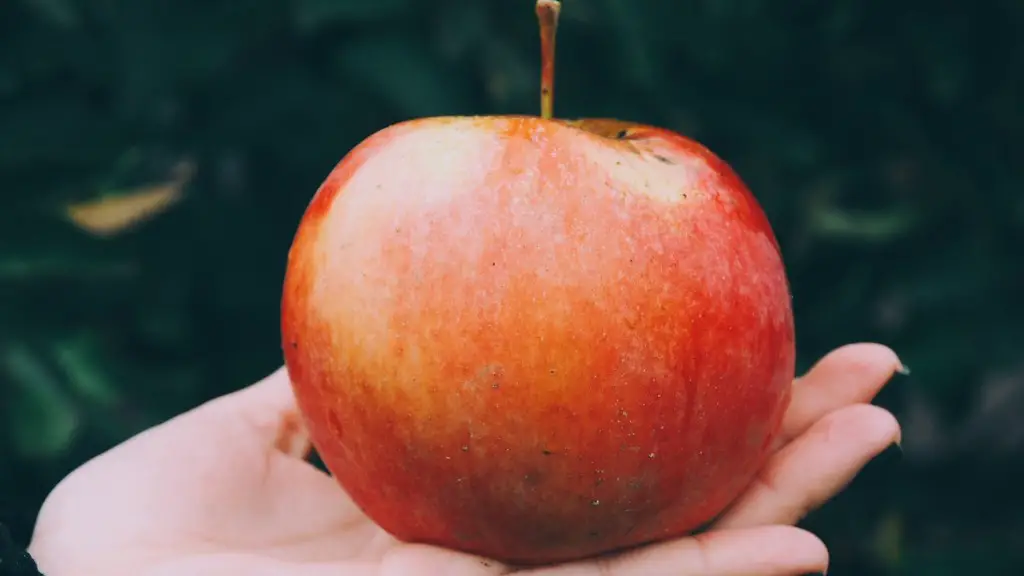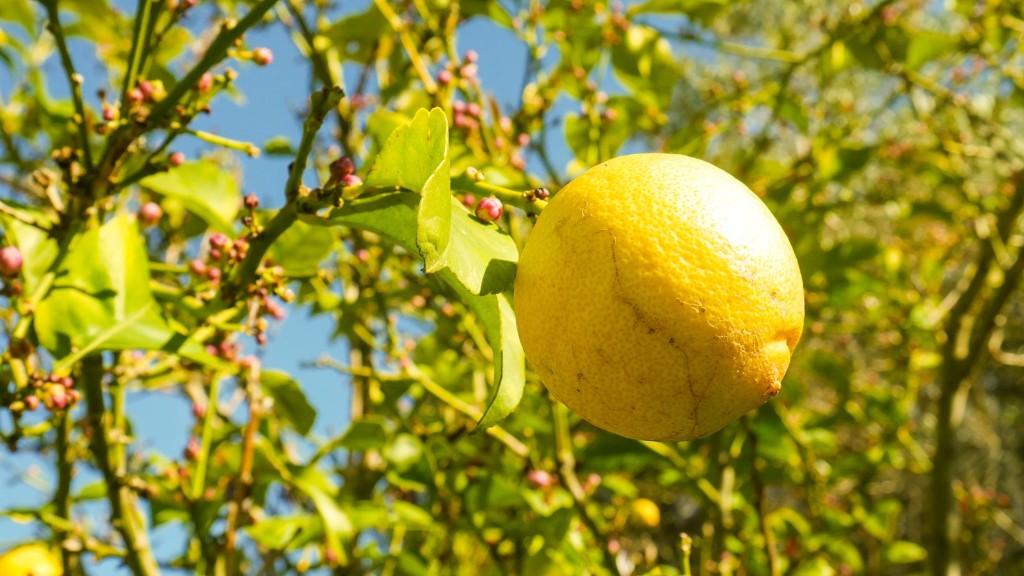What is the Average Number of Apples Produced by a Tree Annually?
Apple trees are among the most cold-hardy fruit trees, making them a popular choice for certain areas with extreme climatic conditions. Generally, apple trees produce a varying amount of fruit each year, depending on growing conditions, variety, and other factors. So, how many apples does a tree produce per year?
The average amount of apples a tree produces per year depends on several factors such as growing conditions, tree health, and fruit variety. In general, a healthy apple tree will produce around 15 to 20 bushels of apples in a season, which is approximately 900-1,200 apples per tree. Of course, good or bad weather can increase or decrease the number of apples produced per season.
Tree size also plays a major factor in the amount of apples a tree produces in one season. In general, the larger the tree size, the greater the number of apples and vice versa. For example, a dwarf apple tree will produce fewer apples than a standard or semi-dwarf apple tree, although typically it takes less time for a dwarf tree to reach maturity and start bearing fruit. Additionally, certain varieties of fruit trees can produce more abundant crops than others.
The apples a tree produces also vary depending on the maturity level of the tree. Younger trees will produce fewer apples than mature trees, with the number increasing as the tree continues to grow. Moreover, certain varieties of apples can produce more than others: some trees can produce up to 40 bushels of apples, whereas others may only produce half that amount.
Overall, it is difficult to accurately determine how many apples will be produced by a single tree in a season, as there is no single definitive answer. While a healthy tree can produce up to 20 bushels of apples in a season, the amount can vary greatly depending on several factors.
What are the Different Growth Factors that Affect the Number of Apples Produced by a Tree?
The number of apples produced by a tree in a single season is determined by a range of growth factors. The primary growth factors that can affect the amount of apples produced annually are: soil quality, soil drainage, root system, climate, and pruning.
Soil quality plays a major part in whether a tree can produce good quality, bountiful apples. Apple trees prefer soil that is rich and fertile, and should be given plenty of organic matter such as compost or manure regularly to promote optimal growth and production. Poor soil, on the other hand, can result in an overall decrease in the amount of apples produced and an overall decrease in quality.
Soil drainage is also critical in apple tree growth and production, as roots need adequate water supply to ensure healthy fruit. Poor drainage can cause waterlogging, resulting in root rot and a decrease in the number of apples produced each season. Climate is another factor that can affect apple tree production; certain regions may experience extreme weather conditions that can limit the number of apples produced.
Pruning can help promote the overall health of the tree, allowing for more blooms, better fruit set, and enhanced tree strength. Pruning can also help promote healthy growth and minimal disease, ensuring optimal yields and quality of apples. Finally, root systems also play a major role in determining the number of apples produced per season: healthy, well-developed root systems allow for better water and nutrient uptake which in turn translates to more apples.
In conclusion, soil quality, soil drainage, root system, climate, and pruning are the main growth factors that can affect the average number of apples produced by a tree per season. By taking these factors into consideration, apple growers can ensure healthy apple production.
What are the Steps Needed to Maximize the Production of Apples in a Single Season?
Apple growers can maximize the number of apples produced in a single season by following a few simple steps. Firstly, apple trees should be planted in soil that is adequately fertilized; this helps to promote optimal growth, health, and production. Secondly, adequate drainage should be ensured to avoid root rot and disease, as well as to ensure healthy tree growth and apple production.
Regular pruning is another important step for promoting healthy growth, as it helps to remove dead or diseased shoots and branches to promote healthy regrowth for the following season. Finally, apple trees should be irrigated regularly, especially during times of drought. This will help to ensure that enough water is reaching the tree’s roots, allowing for sufficient water and nutrient uptake.
For optimal apple production, it is also important to choose the right variety of apple tree. Certain varieties are more cold-hardy and can withstand harsher conditions, while some varieties can produce more bountiful crops than others. Knowing these factors can help apple growers choose the right variety of tree that is best suited to their region.
Overall, there are several steps that can be taken to ensure maximum apple production in a single season. Firstly, adequate fertilization, drainage, pruning and irrigation should be ensured. Secondly, choosing the right apple tree variety is essential. Following these steps can help maximize the amount of apples produced in a single season.
How can Apple Trees be High-Yield and Disease Resistant?
High-yield and disease-resistant apple trees can be achieved by focusing on certain aspects of tree cultivation: adequate fertilization and irrigation, good soil quality and drainage, and pruning techniques. Adequate fertilization and irrigation are both critical in ensuring strong, healthy growth of the tree, promoting health, development and an optimal yield of apples.
Good soil quality is also essential for healthy growth and production, as it encourages root development. Poor soil can result in a decrease in the amount of apples produced, as well as decrease in their quality. Additionally, soil that is sufficiently drained can help to prevent diseases, insect infestations, and waterlogging, which can all contribute to lower yields.
Pruning is also a key factor in achieving healthy apple tree growth and production. Regular pruning helps to remove dead or diseased shoots or branches, providing the tree with a chance to regrow healthy parts. Furthermore, pruning can help to promote optimal flowering and fruit set, resulting in a larger yield of apples.
Finally, choosing a tree variety that is suitable for one’s region is also important in achieving a high-yield, disease-resistant tree. Certain apple tree varieties are more cold-hardy and can tolerate extreme weather conditions, while some are more disease-resistant than others. Opting for one of these varieties can help ensure a greater amount of apples produced in one season.
What are the Benefits of Growing Apple Trees?
Apple trees are a great gardening choice, providing not only bountiful harvests of delicious fruit, but also other benefits both for the home gardener and for the environment. Firstly, apple trees require low maintenance; an apple tree can be left unattended for weeks or even months and still produce delicious fruit.
Apple trees are also a great way to attract wildlife into the garden. Apple blossoms provide a food source for pollinators and the fruits provide an abundant supply of food for birds, squirrels, and other wildlife. Apple trees are also a great source of shade, making them perfect for summertime garden picnics and get-togethers.
Finally, apple trees can add aesthetic beauty to your garden, with fragrant blossoms in the spring and bright fruits in the fall. These can be harvested and used in a variety of ways, such as eating fresh, making juices or ciders, or even preserves. Whatever the purpose, apple trees are sure to be an asset in any garden.
In conclusion, apple trees are an excellent choice for the home gardener, providing low-maintenance with bountiful rewards. Not only do they provide delicious fruit, but they also attract wildlife and bring beauty to your garden. Additionally, apple trees provide a great source of shade and a variety of ways to use their fruit. Overall, apple trees are a great choice for any garden.




